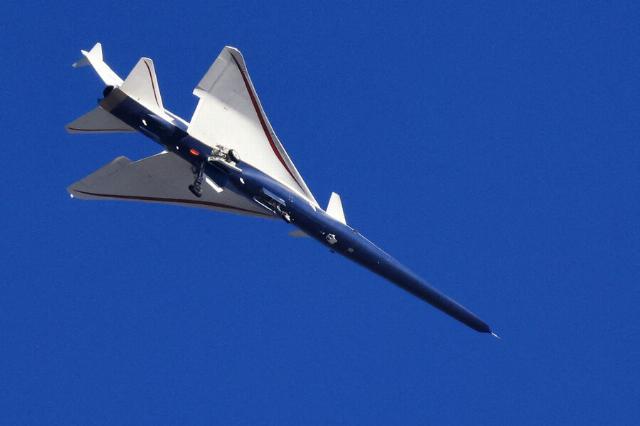New supersonic X-59 aircraft tested in the USA
The X-59, a "quiet" supersonic aircraft created by Lockheed Martin in collaboration with NASA, took to the skies for the first time in the United States. The aircraft took off from the Skunk Works plant at the US Air Force Base in Palmdale, California, and landed at Edwards Base. The first flight took place at subsonic speed, however, the company plans to conduct supersonic flights in the coming months. The X-59 is expected to be able to reach speeds 1.4 times the speed of sound. The details are in the material of "Gazeta.Ru".
The first flight tests of the supersonic X-59 aircraft have been conducted in the USA. The aircraft, created by Lockheed Martin in collaboration with NASA, took off from the Skunk Works plant at the US Air Force Base in Palmdale, California, and landed near the Armstrong Flight Research Center at Edwards Air Force Base.
"The X-59 completed all necessary tasks, verifying the initial flight characteristics and flight characteristics before landing safely at a new location," the company said in a statement.
O. J. Sanchez, Vice President of Skunk Works, noted that Lockheed Martin is proud to be "at the forefront of developing silent supersonic technologies." Acting head of NASA Sean Duffy called the plane "a symbol of American ingenuity."
"It's part of our DNA to strive to fly further, faster, and even quieter than anyone has ever done. This work supports America's leadership in aviation and has the potential to change the way people fly," Duffy said.
According to the New Atlas portal, the first flight took place only at subsonic speed, since it was performed solely to demonstrate the flight qualities of the device. Further tests, including supersonic flights, are planned for the coming months, Lockheed Martin said.
Earlier it was reported that after the completion of flight tests, NASA will conduct X-59 flights over several selected cities across the United States to collect information about the sound that the aircraft makes and how people perceive it. This data will subsequently be provided to the Federal Aviation Administration and international regulatory authorities. They are expected to be able to help review bans on commercial supersonic flights over land.
Development of X-59
The development of the new aircraft began in April 2018. Then NASA announced a contract with Lockheed Martin worth $247.5 million. The company was supposed to develop and manufacture an aircraft with a low shock sound wave by the end of 2021. In June, it became known that the project was named X-59 QueSST (Quiet SuperSonic Technology - supersonic silent technology).
At the end of 2019, Lockheed Martin received permission for final assembly, which was planned to be completed by the end of 2020. They wanted to conduct the first flight tests in 2023, but the company had to postpone them in order to solve a number of technical problems.
In January 2024, Lockheed Martin and NASA unveiled a new "silent" supersonic aircraft, the X-59. The agency noted that it will help "revolutionize air travel, paving the way for a new generation of commercial aircraft."
X-59 Specifications
The X-59 QueSST is 99.7 ft (approximately 30.4 m) long and 29.5 ft (approximately 9 m) wide. Its distinctive features are a long pointed nose and a new wing shape, which are designed to reduce sonic boom. It occurs due to a shock wave formed in front of an airplane flying at supersonic speed - the air cannot clear its way and is compressed into a cone-shaped wave. When it passes over the ground, it resembles thunderclaps.
The geometry of the X-59 is designed to reduce sonic boom. This is achieved by changing the direction of the airflow from the bow to the hull and wings in such a way that instead of concentrating in the bow, the wave breaks up and spreads along the aircraft. Thus, the sound impact is no longer like thunder, but the sound of a car door closing.
The X-59 engine is mounted on top. The cockpit is not equipped with a window. Instead, a 4K monitor is installed, displaying stitched images from two cameras outside the aircraft combined with terrain data from an advanced computing system.
It is expected that the liner will be able to reach speeds 1.4 times the speed of sound.
Eva Vishnevskaya

